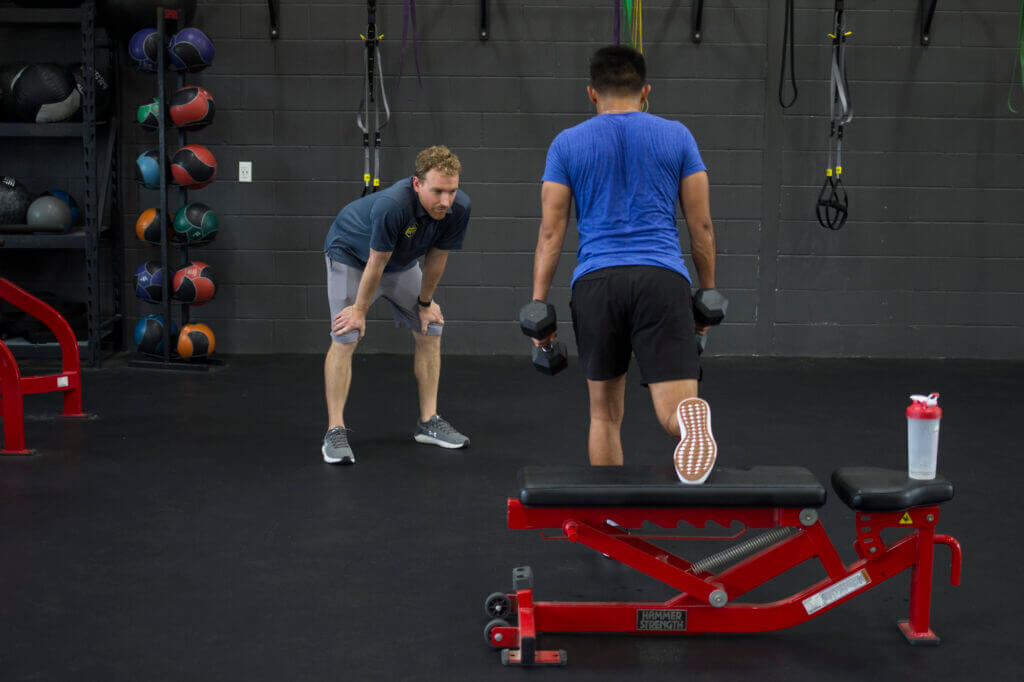
Dr. Tim Puckett has been helping athletes in the greater San Antonio, Texas area improve their performance for more than 10 years. With a specialty in ACL prevention and rehab –– not to mention 6 years of experience with the San Antonio Spurs sports medicine group–– Tim knows a thing or two about sports physical therapy.
In 2018, Tim dropped by the local Redline Athletics facility to introduce himself, and immediately saw an opportunity to contribute and get involved. “Physical therapy is a full workout,” he says. “Previously, I had been working with limited space –– no weight room, no turf, no basketball court –– so now here at Redline, it’s great to be able to offer athletes the equipment and space they need. After all, if I’m working to get a basketball player back in the game, the best way to do that is to see how they move on the court.”
So, with all this experience, we thought we’d ask Dr. Tim to share his top learnings (SO FAR!). Here are Dr. Tim Puckett’s top 7 things I’ve learned as a sports physical therapist.
1. Complete rest is rarely the correct approach to recovery.
Healing takes some taking it easy, for sure, but it’s important to maintain your overall condition while you recover. If your knee is hurt, you can still work on your core strength, upper body or even modified knee exercises. Just shift your focus and keep yourself involved while you’re overcoming an injury.
2. Adequate sleep is non-negotiable if you want to be an elite athlete.
A recent study showed that athletes who slept 8 or more hours each night were 68% less likely to be injured. A different study showed that basketball players made 10% more of their free throws when they got 8 hours of sleep. Sleep is essential to recovery and healing, and you’re far more likely to be injured when you’re running on empty.
3. Too much of a good thing is still too much.
A pitcher can spend too much time pitching. A weightlifter can spend too much time weightlifting. That’s why it’s so important to have good communication with a coach –– or a team of coaches! –– you can trust. They’ll work with you to design a program that keeps you in great overall shape while focusing on your strengths.
4. Strength training isn’t just for the off season.
Foundational movements are the key to success. Many athletes will spend their off season doing intensive strength training and weightlifting. But it’s important to keep maintenance in mind while in season. Maybe you won’t be lifting as much, but you definitely want to vary your workouts and keep an eye on overall fitness.
5. It’s important to have multiple coaches in your corner.
Of course a football player needs a football coach, but why not also have a sports physical therapist? The more professional the guidance, the better. YouTube videos aren’t going to cut it! When you have a team of coaches on your side, it’s easier to modify your training to suit your needs, prevent injury, and assess and correct anything that needs improvement.
6. Ignoring pain is never a good thing.
Pain is your body’s way of telling you something –– like maybe it’s time to sit out this game instead of playing. It can be hard for an athlete to feel comfortable saying that. That’s why it’s so important to have a trusted team of parents, coaches, and sports medicine professionals focused on your best interests. Nobody wants you to win more than they want you to be safe.
7. No pain, no gain? Not always true!
We spend a lot of time teaching our athletes how to ask the right questions, learn the correct vocabulary, and choose the right word to describe what’s going on with their body. For example, pain generally feels significant. It’s typically sharp or shooting, and it feels harmful.
Discomfort is different, though, and a totally normal response to training. If something feels challenging and gets your muscles burning, it’s a sign that you’re pushing your body to get better, but fatigue is different than pain.
It’s a similar deal with soreness. After an intense session or practice, it’s typical to have some soreness that can last for 2-3 days. Stretches are usually your best friend here. If soreness lasts longer, though, or starts to feel more acute, make sure you tell someone.

Dr. Tim Puckett graduated from Texas Tech Health Sciences Center with a Doctorate in Physical Therapy and has focused on sports rehab ever since. He is a Board Certified Orthopedic Specialist and has a passion for helping athletes of all ages achieve their goals. He is a husband to Diana and proud father of two. By the grace of God, he is a living kidney donor and attends church with his family where he learns to better love and serve others. You can learn more about Dr. Puckett at puckettpt.com.
